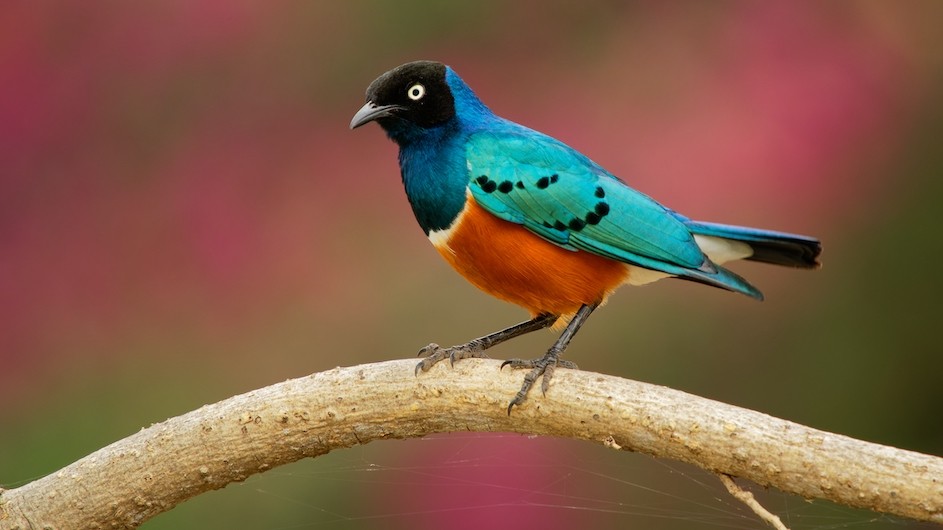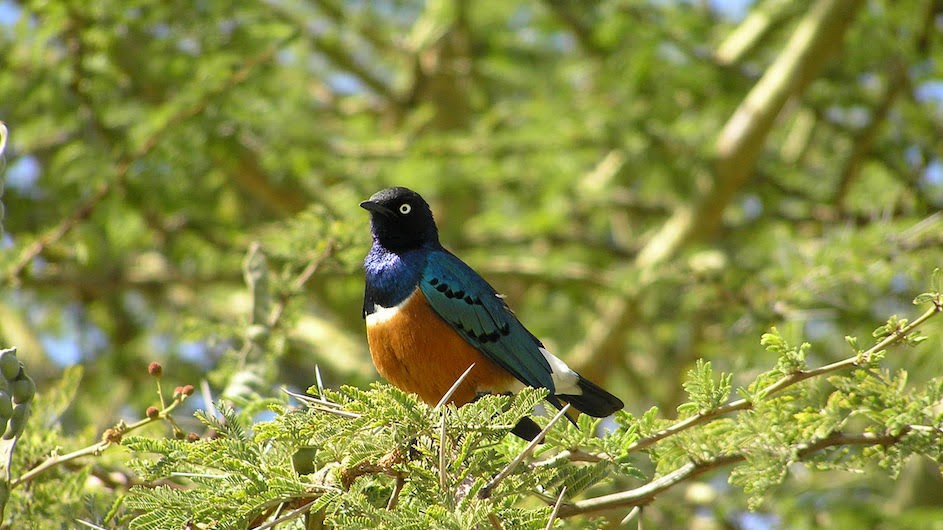New Details on Why Starlings Allow ‘Immigrants’ to Join Their Communities
A new paper on superb starlings offers new data and insight on why they form social groups with non-relatives.

Most social creatures in the animal kingdom cavort with and help raise their own offspring or those of their relatives, an approach that makes sense if you think of organisms as genetic hoarders, dedicated to preserving the health and longevity of their own genes above all.
But a surprisingly large number of species across the world also form large social groups with animals outside of their own immediate network of relatives. Humans and other primates are among them, but so are many birds, other mammals, and a variety of invertebrate species.
A new paper in the Proceedings of the National Academy of Sciences by Shailee Shah, a postdoc at the University of Rochester who earned her PhD at Columbia in 2022, and Dustin Rubenstein, a professor of ecology, evolution, and environmental biology, draws on 20 years of data collected by Shah, Rubenstein, and Rubenstein’s students and partners in Kenya, to offer new data and details to explain why superb starlings form large and complex groups that contain both relatives and non-relatives.
Columbia Researchers Explore Why Animals Socialize
Nest predation and chick starvation are high in the African savannah where these starlings make their home, and if a group can’t produce enough offspring, it is likely to die off, Shah and Rubenstein showed using modeling and their long-term dataset. But, this paper shows, superb starlings have adopted a novel strategy to prevent groups from going extinct. In the face of low offspring production, the only way for groups of these starlings to remain stable and to avoid dying off completely is to have unrelated “immigrants” of both sexes join them. In most birds that live in groups, immigrant females join those groups and breed. But superb starlings also allow immigrant males to join their groups and breed in order to persist in the harsh and unpredictable environment in which they live.
The paper also found that, although starling groups thrive when they are larger, and thus smaller groups need immigrants more than larger groups, dispersing superb starlings actually tend to join larger groups, because they have higher individual fitness in larger groups. That finding means that two sometimes opposing pressures—of individual versus group-level fitness—shape superb starling societies.
The research is a culmination of more than two decades effort to understand the role of environmental uncertainty in these birds’ highly social behavior.
“Theoretical work to-date has suggested that these starlings gain a distinct fitness advantage from recruiting outside birds to their groups, but it’s only now that we can definitively say why they do so: Because without them they could not survive,” Shah said.

Rubenstein first started collecting data on superb starlings in 2001. Since joining Columbia in 2009, he and his students have continued to travel to Kenya annually, where they work with local partners to monitor the birds year-round and study how environmental change shapes social living.
In addition to studying starlings, Rubenstein studies a variety of other social organisms, ranging from snapping shrimp living in the Caribbean to Asian burying beetles to Australian mice and lizards. Many of these animals also form groups where they help raise offspring other than their own. Some species of snapping shrimp, like superb starlings, form groups with both genetic relatives and non-genetic relatives, whereas burying beetles do so exclusively with non-relatives.
“You typically find these types of cooperative societies in the most variable and unpredictable climates in the world,” Rubenstein said. Burying beetles, for example, appear to cooperate in environments in Asia where they are under threat from flies that compete with beetles for access to their primary resources, small animal carcasses. In hot environments at low elevation where flies are abundant, beetles work together quickly to bury carcasses to prevent flies from laying their eggs, which would eventually kill the beetle larvae. At higher elevations where temperatures are cooler and there are fewer flies, the beetles stop cooperating because their larvae aren’t as threatened. Ultimately, Rubenstein’s work on starlings, beetles, and other social species sheds new light not only on why animal societies form, but also on the consequences of social living.
“Once we understand the environmental drivers of social living, as well as the evolutionary mechanisms that underlie differences in the structure of animal societies,” said Rubenstein, “We can then begin to comparatively examine the genetic architecture, the population genetic patterns, and the neural corelates of cooperation and social living in different populations of the same species, or in different species.” Rubenstein’s lab at Columbia addresses these, and other, topics in his quest to understand the causes and consequences of social living.